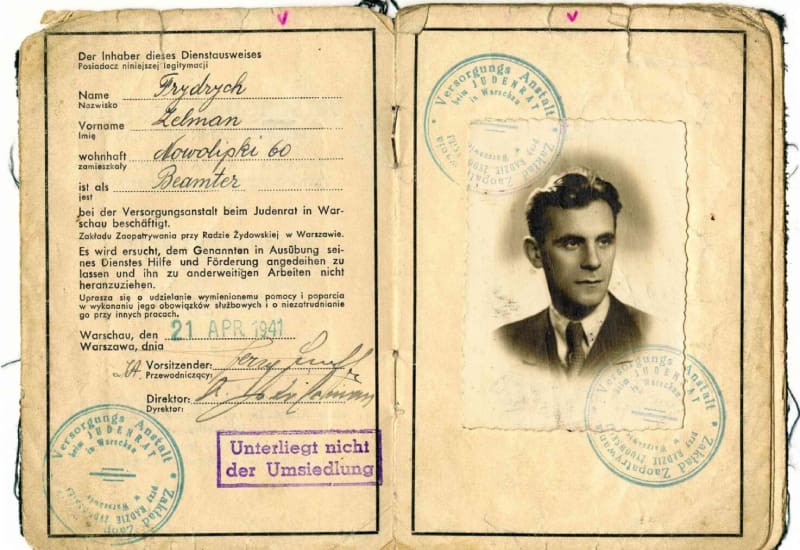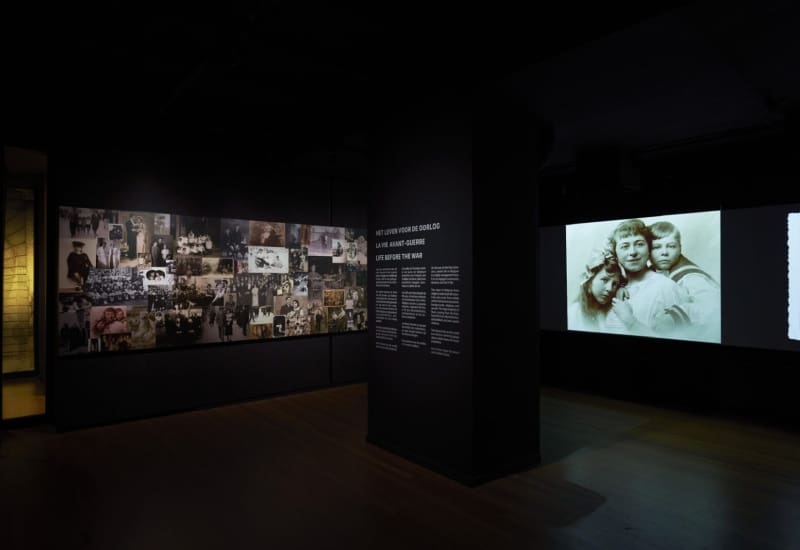Explore how archives, libraries, and museums use their unique strengths and collections to combat antisemitism and create lasting change.
Spotlight on Holocaust Collections

Recognized as the leading authority in Holocaust education, remembrance, documentation, and research, it is the world’s largest Holocaust-era repository with 220 million pages of documentation, 520,000 photographs and films, 179,000 scholarly publications, 134,000 survivor testimonies, and 55,000 artifacts and works of art. Its Central Database of Holocaust Victims’ Names includes information on 4.8 million Jews who were murdered.

The United States’ official memorial to the Holocaust, adjacent to the National Mall in Washington, D.C. Its collections contain approximately 112 million archival documents, 200 million digital images, 127,000 library items, 114,116 historical photographs, 23,571 objects and artifacts, 23,000 Holocaust-related testimonies, 1,675 hours of archival film footage, and 11.6 million name records for Holocaust survivors and victims.

The institution provides a library, archive, and information service dedicated to supporting research and advocacy about the Holocaust. Its collections contain 2 million published and unpublished manuscripts, original news media, photographs, eyewitness testimony, books and pamphlets, periodicals, posters, artworks, and audiovisual materials.

The institution preserves, studies, and teaches the cultural history of Jewish life throughout Eastern Europe, Germany, and Russia, with a particular focus on studies related to Yiddish. Its collection includes 6000 volumes published in Nazi Germany from 1933 to 1945, 700 memorial volumes (yizker-bikher) and Holocaust Survivor Lists. YIVO is the only pre-war Jewish archive and library to have survived the Holocaust.

The institution is located within the former Mechelen transit camp and documents the persecution of Jews, Roma, and Sinti in Belgium and Northern France during WWII. It includes a memorial, a museum, and a research centre, where 1.5 million+ original documents, photographs, and records have been digitized in an accessible “image bank.”

A research institution that focuses on the history of Jews in Poland and Jewish culture. It holds The Underground Archive of the Warsaw Ghetto, the so-called The Ringelblum Archive. Listed on the Memory of the World Register by UNESCO, the archive is a unique collection of documents constituting one of the most important testimonies about the extermination of Polish Jews. Its broader collections include 15,000 objects, 100,000 archived photographs, and a library of 80,000 volumes.
Coming soon: survey data on 100 institutions with collections containing Holocaust-related material including 50 in the Americas, 44 of those in the United States; 41 in Europe, of which 8 are in Germany, 6 in Poland, and 6 in the United Kingdom; 5 in Israel; 2 in Asia (Hong Kong and Japan); 1 in Africa (Capetown); and 1 in Australia (Melbourne).
Spotlight on Holocaust Collections

Recognized as the leading authority in Holocaust education, remembrance, documentation, and research, it is the world’s largest Holocaust-era repository with 220 million pages of documentation, 520,000 photographs and films, 179,000 scholarly publications, 134,000 survivor testimonies, and 55,000 artifacts and works of art. Its Central Database of Holocaust Victims’ Names includes information on 4.8 million Jews who were murdered.

The United States’ official memorial to the Holocaust, adjacent to the National Mall in Washington, D.C. Its collections contain approximately 112 million archival documents, 200 million digital images, 127,000 library items, 114,116 historical photographs, 23,571 objects and artifacts, 23,000 Holocaust-related testimonies, 1,675 hours of archival film footage, and 11.6 million name records for Holocaust survivors and victims.

The institution provides a library, archive, and information service dedicated to supporting research and advocacy about the Holocaust. Its collections contain 2 million published and unpublished manuscripts, original news media, photographs, eyewitness testimony, books and pamphlets, periodicals, posters, artworks, and audiovisual materials.

The institution preserves, studies, and teaches the cultural history of Jewish life throughout Eastern Europe, Germany, and Russia, with a particular focus on studies related to Yiddish. Its collection includes 6000 volumes published in Nazi Germany from 1933 to 1945, 700 memorial volumes (yizker-bikher) and Holocaust Survivor Lists. YIVO is the only pre-war Jewish archive and library to have survived the Holocaust.

The institution is located within the former Mechelen transit camp and documents the persecution of Jews, Roma, and Sinti in Belgium and Northern France during WWII. It includes a memorial, a museum, and a research centre, where 1.5 million+ original documents, photographs, and records have been digitized in an accessible “image bank.”

A research institution that focuses on the history of Jews in Poland and Jewish culture. It holds The Underground Archive of the Warsaw Ghetto, the so-called The Ringelblum Archive, listed on the Memory of the World Register by UNESCO, is a unique collection of documents constituting one of the most important testimonies about the extermination of Polish Jews. Its broader collections include 15,000 objects, 100,000 archived photographs, and a library of 80,000 volumes.
Coming soon: survey data on 100 institutions with collections containing Holocaust-related material including 50 in the Americas, 44 of those in the United States; 41 in Europe, of which 8 are in Germany, 6 in Poland, and 6 in the United Kingdom; 5 in Israel; 2 in Asia (Hong Kong and Japan); 1 in Africa (Capetown); and 1 in Australia (Melbourne).
Holocaust Museums Around the World
מוזיאון למורשת היהדות ידוברת הוגרית / Muziy'un Lemorshat Hiyhadut Yeduvarat Hugrit
Safed, Israel
Founded in 1990
Association de la Maison d'Izieu, mémorial des enfants juifs exterminés
Izieu, France
Founded in 1994

